Woburn Sands and Aspley Heath War Casualties – The Knoll School Cross, Aspley Heath
Ex-pupils of what was then Knoll School, at the top of Aspley Heath, who were killed in the First World War, are commemorated by a Memorial Cross in the grounds. Although the names are not inscribed on the cross, a postcard is lodged at Norfolk Record Office, which the Headmaster, Rev. F. F. Hort, sent to one of the Hewetson family after the War, and on the rear he listed all the boys it was in memory of.
At some point, the Cross was broken into several pieces, but has been well repaired. The inscription reads:
AD MAIOREM DEI GLORIAM
ET IN PIAM EORUM MEMORIAM QUI LUDO SUO PUERI
ADULESCENTES PATRIAE PROFUERUNT VICTORIA
IAM PARTA HOC AES QUANTULUMCUMQUE P.C. AMICI
…which translates as:
Friends took care to place this monument, however small, to the greater glory of God and to the dutiful memory of those who, as boys, were a credit to their school and as young men were a credit to their homeland, since victory has now been gained
(Translation by J. Hone, Head of Classics, Bury Grammar School. Many thanks)
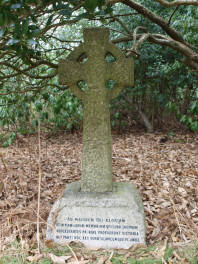
LIEUTENANT DENYS ALFRED LAFONE AINSLIE
Devonshire Regiment 1st Bn. Died 24th October 1914
Son of Mr. and Mrs. W.L. Ainslie, of Hanworth House, Harrow Weald, Middlesex.
Memorial: LE TOURET MEMORIAL. Panel 8 and 9.
Entry from De Ruvigny’s Roll Of Honour 1914-1924: “AINSLIE, DENYS ALFRED LAFONE, Lieut. 1st Battn, Devonshire Regt., 3rd s. of William Langstaff Ainslie, of Hanworth House, Harrow Weald, Middlesex, by his wife, Jane, dau. of Alfred Lafone; b. Hanworth Park, 21 May 1894; edu Wellington College, Berks. Joined 3rd Reserve Battn. Devonshire Regt. in Jan 1911, promoted Lieut 25 April 1913: gazetted to the 1st Batt as 2nd Lieut 14 Aug 1914, killed in action at Givenchy 24 Oct following, buried there. He was promoted Lieut (after death) March 1915. Col. Boles (commanding 3rd Battn Devonshire Regt) wrote: We deplore the loss of a capable and gallant officer and one who was the most popular with all ranks.” and the chief of the Tutorial Staff of the Law Society says: “No one who knew Ainslie could fail to be impressed by the charm of his character and attracted by his personality.”
Times obituary, 30th October 1914: “Second Lieutenant Denys Alfred Lefone Ainslie, 1st Batt. Devonshire Regiment fell in action in France on October 24. He was the third son of Mr and Mrs W L Ainslie of Hanworth House, Harrow Weald. A memorial service will be held at All Saints Church, Harrow Weald, tomorrow at 3pm.”
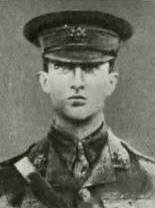
A family descendant, Anthony Ainslie, wrote in his family history: “Denys Alfred Lafone Ainslie (1894-1914) was educated at Woburn and Wellington College, initially articled to his father’s (William Langstaff Ainslie) firm of solicitors. He always wanted to join the army, entering the Special Reserve of officers. Called up in 1914 and commissioned as a Lieutenant with the 1st Devons; they went via Jersey to Le Havre, landing on 14th September 1914, where they joined 8th Brigade, 3rd Division and were used as Lines of Communication Defence Troops.
Denys was killed in action at Givenchy-les-las Bassee on 29th October 1914, the action known as the first battle of Ypres. His body was not recovered and his name is recorded in the Le Touret Memorial, panels 8 & 9 and in the CWGC records.
Denys was the third of four brothers. The eldest, William Maurice Lafone Ainslie (1889-1957) was also educated at Woburn Sands, Tonbridge School and in France and Germany. He volunteered in 1914, joining the Middlesex Regiment, but was invalided in 1916. The second son Eustace Montague Lafone Ainslie (1892-1935) was also educated at Woburn Sands and Wellington College, then the Royal School of Mines. He also joined the Middlesex Regiment in 1914 but transferred to the RFC, where he was wounded. The fourth son was too young for the war and evidently did not attend school in Woburn Sands.
The London Gazette reveals that Denys, then a probationary 2/Lieut in 3/Devonshire, Suppl. Reserve of Officers, was confirmed in that rank on 15th December 1912, and made Lieutenant on 25th April 1913.”
SECOND LIEUTENANT GERARD RIMINGTON BOWER
The Queen’s (Royal West Surrey Regiment) 1st Bn. Died: 15th July 1916
Son of the late Theodore Herbert and Mary Whichelo Bower. Age: 19
Memorial: THIEPVAL MEMORIAL Pier and Face 5 D and 6 D.
Times Obituary, 4th August 1916: Gerard Rimington Bower was born in 1897, died on 15 July 1916; Second Lieutenant Gerard Rimington Bower, Queen’s (Royal West Surrey Regiment), who was killed on July 15 was the second son of Mr and Mrs Theodore Herbert Bower, of Farnborough, Kent. He was 19 years old and was educated at The Knoll, Woburn Sands and at Tonbridge. In August 1914, he received a commission in the 22nd London Regiment and in the spring of 1915 he went to France. After being in the trenches for five weeks he was given a nomination for Sandhurst, and he passed out from there last Christmas and obtained a commission in the Queen’s.
J. BURNETT
I have yet to establish the identity of this man.
LIEUTENANT HUGH ANTHONY RUPERT CROOKHAM
Cambridgeshire Regiment 1st Bn. Died: 3rd August 1915
Age: 22. Son of Rev. W. T. R. Crookham, C.B.E., T.D., and Beatrice Crookham, of The Vicarage, Wisbech. Scholar of Jesus College, Cambridge, B.A. 1915.
Cemetery: LE TREPORT MILITARY CEMETERY Plot 1. Row E. Grave 7.
Times obituary, 13th August 1915: “Lieut Hugh Anthony Rupert Crookham, 1st Cambridgeshire Regiment, only son of The Rev W T R Crookham, vicar of Wisbech, and Grandson of the late Archdeacon Emery, died in hospital on August 3 as a result of an attack of meningitis, following on a serious head wound received on July 2nd. Lieutenant Crookham was born on April 30, 1893 and was educated at The Knoll, Woburn Sands and Felsted School, Essex where he held a scholarship and was a member of the OTC. From Felsted he won a leaving exhibition to the University and also gained a Rustat classical scholarship at Jesus College Cambridge. At Cambridge he obtained a Goldsmiths Scholarship and was a member of the college tennis six. Early in the Autumn of 1914 he was gazetted Second Lieutenant in the 2/1st Cambridgeshire Regiment. After serving in England for nine months he was drafted to the 1/1st Cambridge Battalion, as lieutenant, a fortnight before he received his fatal wound from a rifle grenade. While in hospital in France he was admitted by proxy as a a Bachelor designate in Arts in the University of Cambridge on July 16.”
A battlefield cross for him is located in St Peter and St Paul Church, Wisbech.
CAPTAIN ARTHUR TULLOCH CULL
Royal Flying Corps 48th Sqdn. Secondary Regiment: Seaforth Highlanders, Secondary Unit Text: and 1st Bn. Died: 11th May 1917
Memorial: ARRAS FLYING SERVICES MEMORIAL
Cull was born in Ceylon, and later lived in Sutton Coldfield. He was educated at Uppingham to 1902 where he was school captain, and joined the Inns of Court OTC in 1914. He was commissioned into Seaforths and later RFC. He also played rugby for Rosslyn Park. His brother, John Tulloch Cull, also a flyer for the RNAS, won the DSO.
He was seconded from the Seaforth Highlanders for service with the Royal Flying Corps in January 1916. He was killed in action on 11 May 1917 whilst on an offensive patrol East of Arras, when his machine was shot down in flames. “The Sky their Battlefield”, by Trevor Henshaw suggests that he was a victim of the German fighter ace Karl Allmenroder, a member of the famous Jasta 11, Richthofen’s ‘Flying Circus’. During May, Karl downed thirteen RFC planes, far more than any other German pilot, while Wilhelm claimed one plane only and two balloons. Arthur Cull and his observer Arthur Trusson seem to have been unlucky.
In a report written by Second Lieutenant W.O.B. Winkler who was shot down in the same action as Cull, (Winkler himself had fallen victim to Lothar Freiherr Von Richthofen, brother of the Red Baron, but fortunately he survived his forced landing and was taken prisoner of war) says ‘I wrote a p.c. off immediately to Geneva last night about Captain Cull. I am very sorry to say that both he and his observer 2nd A.M. Trusson are killed. As you were led to understand they came down in flames from about 6,000 feet, so there was not much chance of their coming out of it. It was very hard luck, because he was one of our best. I think he was hit right at the beginning of the fight, judging from the way the machine flew, his machine was my other pair on that day and on many previous ones. The German’s confirmed his death after we were taken.‘
Some sources suggest from the location of the kills that it may have been Richtofen who downed Cull, not Allmenroeder.
(Information courtesy of rugbyremembers, a history of Rosslyn Park Rugby Club)
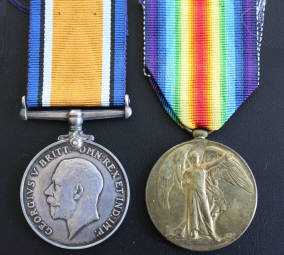
SECOND LIEUTENANT ARCHER CHERNOCKE DOWNES
Cheshire Regiment 2nd Bn. Died: 20th November 1914
Age: 22. Son of Catherine E. A. Downes, of Aspley House, Aspley Guise, Beds., and the late Lt. Col. C. V. Downes. His brother, Villiers Chernocke Downes also fell. They both appear on Aspley Guise Memorial.
Cemetery: POPERINGE COMMUNAL CEMETERY, I. B. 5.
His Times obituary says he died of wounds, and had attended Trinity and Winchester College.
From “Wykehamists Who Died in The War, Vol 3”: Lieutenant Archer Chernocke Downes, Cheshire Regt. (A, 1906 – 1911) was born on August 5th 1892. He was the son of Lieutenant Colonel C V Downes, J.P. of Aspley House, Aspley Guise, Bedfordshire and one of three Wykehamist brothers, another of whom Lieutenant V. C. Downes (A. 1905 – 1909) Bedfordshire Regt, died of wounds on October 18th 1914. Both brothers entered Chernocke House from E F Millers school at Woburn Sands; the younger was ninth man for Wimbledon VIII, coxed School IV for two years and was appointed a House Prefect in 1910. In 1911 he followed his brother to Trinity College, Oxford.
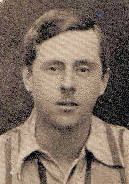
At the outbreak of war he obtained a commission in the Cheshire Regt. and was attached to the 3rd Battalion. He died of wounds as Poperinghe on November 20th 1914, just a month after his brother; he had left the trench to bring in a private soldier who was lying wounded between the lines and himself sustained a mortal injury in the attempt.
Entry from De Ruvigny’s Roll Of Honour 1914-1924: Wounds received at Neuve Eglise, near Bailleul. Left trench to help wound man when shot. Unmarried.
LIEUTENANT VILLIERS CHERNOCKE DOWNES
Bedfordshire Regiment 1st Bn. Died 18 October 1914
Age: 23. Son of Catherine E.A. Downes, of Aspley House, Aspley Guise, Beds., and the late Lt. Col. C. Villiers Downes. His brother, Archer Chernocke Downes also fell. They both appear on Aspley Guise Memorial.
Cemetery: LONGUENESSE (ST. OMER) SOUVENIR CEMETERY, I. A. 7.
Times obituary, 22 October 1914: Lieutenant Villiers Chernocke Downes who died of wounds at Omer was the son of Lieutenant Colonel C Villiers Downes of Aspley Guise Bedfordshire. He became a lieutenant in the 3rd Batt. Bedfordshire Regt. in July 1913, and was 23 years old. Wounds received 13th. Trinity and Winchester College.
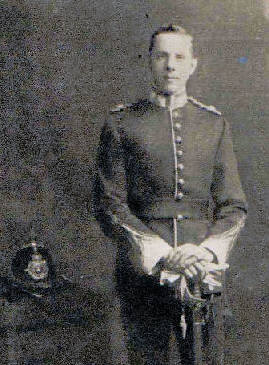
From “Wykehamists Who Died in The War, Vol 3”: Lieutenant Villiers Chernocke Downes (A 1905 – 1909) was born March 5th 1891 – son of Lieutenant Colonel C V Downes, J.P. of Aspley House, Aspley Guise, Bedfordshire and one of three Wykehamist brothers, another of whom Lieutenant A. C. Downes (A. 1905 – 1909) Cheshire Regt, died of wounds on November 20th 1914. He came to Winchester from Rev E F Millers preparatory school at Woburn Sands, and in 1909 went to Trinity College Oxford; he studied later at the Agricultural College Cirencester.
When war broke out he held a commission in the Special Reserve and was ordered to France with the 1st Battalion Bedfordshire Regt. He was taken prisoner on one occasion, but escaped and was instrumental in saving two maxim guns. He died of wounds at St. Omer on October 18th, 1914.
Entry from De Ruvigny’s Roll Of Honour 1914-1924: Served trough retreat at Mons and Battle of Marne, saved 3 guns, nearly due for captaincy.
CAPTAIN NORMAN HERBERT ENGLAND
Royal Air Force 92nd Sqdn.Died: 7th April 1918
Husband of Dorothy Light (formerly England), of 57, Greyhound Lane, Streatham, London.
Cemetery: OVING (ST. ANDREW) CHURCHYARD EXTENSION
Captain Norman Herbert England, and 2Lt Clifford Hackman of No 92 Sqn RAF, were killed in an accident while flying at 30 feet over Tangmere in Avro 504 B986 on 7 April 1918. The Avro collided with Sopwith Pup B5269, flown by 2Lt Victor Raleigh Craigie of No 92 Sqn, from Boston, Massachusetts, USA, who was also killed. “Flight” magazoine archive records that he was aged 31, and the son of Major F H England, late Royal Welsh Fusileers.
CAPTAIN CHARLES BELL FORD
Indian 103rd Mahratta Light Infantry, Secondary Regiment: 7th Gurkha Rifles, Secondary Unit Text: attd. 1st Bn. Died: 30th September 1919
Memorial: BASRA MEMORIAL Panel 48.
LIEUTENANT CHARLES RONALD VAUGHAN GRIMSHAWE
Durham Light Infantry 22nd Bn. Died: 28th May 1918
Age: 25. Son of Capt. Cecil and Mabel Grimshawe, of Elmcote, The Goffs, Eastbourne. Born at Aspley Guise, Beds.
Cemetery: HERMONVILLE MILITARY CEMETERY, III. H. 10.
An “In Memoriam” appeared in The Times May 28 1920: “Grimshawe, Lieutenant, Durham Light Infantry. To the everlasting glorious memory to our darling son and only child Charles Ronald Vaughan, who fell in action near Bouvencourt, 28th May 1918. Reported wounded and missing. Eventually interred at Hermonville Military Cemetery, near Rheims August 1919.”
LIEUTENANT EDMUND HARTLEY
Lancashire Fusiliers, 2nd Bn. Died 18th May 1918
Age: 23. Younger son of W. H. and Gertrude Hartley, of Hoarstones, Burnley, Lancs; husband of Barbara Hartley.
Cemetery: MONT-BERNANCHON BRITISH CEMETERY, GONNEHEM, I. F. 6.
Times obituary, 31st May 1918: “Lieutenant Edmund Hartley, Lancashire Fusiliers, who was killed in action on May 18 was the only surviving son of Mr and Mrs Hartley of Hoarstones near Burnley, his elder brother Lieutenant Christopher Hartley of the RFA having been killed near Ypres on September 1st 1917. Born in 1894 and educated at The Knoll, Woburn Sands and at Harrow he left Brasnose College Oxford at the outbreak of war for Sandhurst and received hs commission in November 1914. He was severely wounded in the Second battle of Ypres, again on the Somme, and also in the Battle of Arras. He returned to the Front by his own request last February. His CO writes – He was very highly thought of and his loss is a deep blow to the Battalion. His Major “on behalf of the officers of the battalion who have known him out here since the early days of the war” says “He was a stout hearted and most conscientious officer, and his loss will be deeply felt by all who knew him” Lieutenant Hartley married in September 1917, Barbara, only daughter of Mr and Mrs George Haye of Trevear, Wellington College. He was a member of the Otter Swimming Club and also the British Fell and Rock Climbing Association, and ardent lover of the English Lake country.”
[Christopher had got engaged to Dorothy Chernocke in April 1914, sister of two Downes brothers]
CAPTAIN RICHARD JOHN PHILIP HEWETSON
The Loyal North Lancashire Regiment 3rd Bn. attd. 9th Bn. Died: 3th July 1918
Age: 24. Only son of the Rev. W. Hewetson, M.A., and Mrs. Hewetson, of St. Cuthbert’s Rectory, Bedford. Educated at Repton School and Oriel College (Oxford). Served from Aug., 1914, previously wounded at Loos, 1915.
Cemetery: VENDRESSE BRITISH CEMETERY, IV. F. 3.
Times obituary, 21st Feb 1919: “Captain Richard John Philip Hewetson, 3rd The Loyal North Lancashire Regiment, was the only son of The Rev and Mrs W Hewetson of Salhouse-w Wroxham Vicarage, Norwich. He was educated at The Knoll, Woburn Sands, and Dulwich Preparatory Schools, afterwards at Repton and Oriel College, Oxford. While at school he won several cups for running and gained his football colours in 1911. He was head of his house for two years and a school prefect. He belonged to the Repton OTC and gained Certificate A in 1911. He played in the freshers match at Oxford in 1912. He volunteered for service in August 1914, the day after his 21st birthday, and was offered his commission and gazetted from that month. He went to France first in June 1915, and served with the 1st Battalion. He became bombing officer for the battalion and went over the top on September 25 at the Battle of Loos. He was hit early on in the day and lay out for nine hours. The result was that he lost the use of his fingers for some months. During this time at home he acted as assistant adjutant of the 3rd Battalion at Felixstowe for six months, and went again to France in March 1917. This time he joined the 9th Battalion and was adjutant until the Battle of Messines, when he acted as liaison officer between a Canadian brigade and his own. After this he became adjutant and quartermaster for the 2nd Corps Advanced Reinforcement Camp, and later took part in the engagements around Ypres, Westhock &c. He came home in October and was advised to accept home service, as his heart was overstrained. He requested, however, to be passed for general service again, and although unfit, he was sent once more to France in April, 1918. He joined the 9th Battalion, but was given command of a brigade instructional platoon because of his “splendid work the year before in heartening up men” His division, the 25th, was sent with other tired divisions to rest on the Aisne. They were overwhelmed on May 27 by 5 times as many Germans. He was ordered to fill a gap which had occurred on the left flank three miles long. This was over 5 miles away. They had not gone more than half an hour when they met with the enemy in large forces. They put up a splendid fight which lasted nearly one hour, by which time they were practically surrounded. Captain Hewetson was taken prisoner with his leg smashed, but was not picked up until the next day, by which time gas gangrene had set in. His leg was amputated by an English doctor also a prisoner. But, owing to lack of food, Captain Hewetson died five weeks later in a cellar converted into a field ambulance and was buried in Beaurieux Cemetary. He was 24 years of age. His colonel wrote:- It will be a help to you in bearing the blow to be assured of the very real esteem and affection with which your sons memory will be cherished by all in the regiment who served with him He leaves a record of steady accomplishing of good work, and his calm and reliable nature made him a most valuable officer. All my memories of him are pleasant ones.”
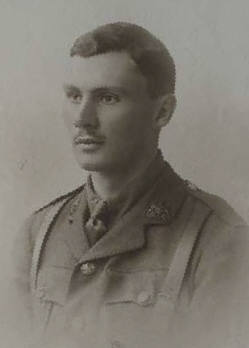
SECOND LIEUTENANT JOCELYN HENRY CAMBRIDGE LANE
Coldstream Guards 4th Bn. Died 16th October 1918
Age: 34. Son of F. G. A. and M. E. A. Lane, of Bloxworth House, Wareham, Dorset.
Cemetery: ETAPLES MILITARY CEMETERY, XLVIII. B. 2.
Attended Haileybury School Age 34 . Haileybury Register 1862-1983 Melvill 1898-1903 born 29 August 1884. He is commemorated on the Singapore Cenotaph Memorial.
SECOND LIEUTENANT W. G. LANE
Queen’s Own Worcestershire Hussars (Worcester Yeomanry) 1st/1st. Died 7th November 1917
Age: 23. Son of Mr. W. and Mrs. M. E. Lane, of Clerkenleap, Worcester.
Cemetery: KANTARA WAR MEMORIAL CEMETERY, E. 361.
From “Wycliffe and the Great War”: William George Lane, 2nd Lieutenant, Worcestershire Yeomanry, died of wounds received in action, November 7th 1917. Not until after the Armistice did we learn of the death of William George Lane, who was a border at Wycliffe in1908 – 1909. After leaving school, he farmed at home until he joined the Worcester Yeomanry on September 3rd 1914. He sailed with his regiment for Egypt in April 1915, and was sent to Gallipolli, whence after some weeks of active service he was invalided to Lemnos, and so to Alexandria. After a period of Garrison duty in Egypt he took part in the Battle of Katia on Easter Sunday 1916, when only 70 out of 420 of the Worcestershire Yeomanry got back, Will Lane among their number. Later he was fighting at El Arish and Gaza, and rose to be a sergeant in his regiment. He received his commission just before the fighting in which he was fatally wounded. Lieut-Col H. J. Williams wrote to his parents as follows: “I had asked for your son to be posted as an officer to my regiment – owing to what I had seen of his work as an NCO. He had only been posted as a 2nd Lieutenant a week when he was severely wounded, and a few days afterwards he died in hospital. He was shot in the head while we were repulsing a Turkish counter attack on a position at Ras El Nagbab out 12 miles NE of Beersheba. His courageous handling of his troop was of utmost value in successfully repelling the attack, for which he was holding a forward and vital position. The whole regiment mourns his loss, for he was held in the greatest respect both as an NCO and during his brief career as an officer.”
One of his comrades also wrote of the gloom into which all were plunged by the death of one who had been with the regiment from the first. He died at the 45th Stationary Hospital on November 7th 1917, and was buried as Masaid Military Cemetery in Egypt. He saw two and a half years foreign service without obtaining any home leave, and much sympathy will be felt for those who mourn his loss. Such a record is merely one more proof – if proof were needed – of how the war touched even rural England, and how all classes sacrificed their best. May we who are left to carry on guard faithfully those good things which these lads have preserved for us and all our race.”
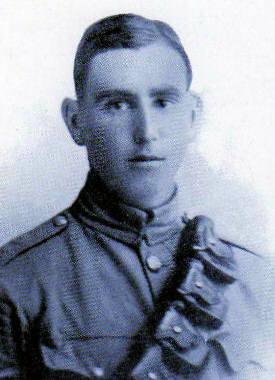
PRIVATE EDWARD MINTY MILLER
was one of four sons (and one of twins) of Archdeacon Miller, the Headmaster of The Knoll school. He was in the Royal Fusiliers, 24th Batt.
Born at St Thomas College, Colombo, 7th November, 1881, he was educated at St Faiths, Cambridge and Marlborough. He enlisted on 10th February 1915, and served with the Expeditionary Force in France and Flanders from the following November. He was killed in action at Beaumont Hamel on 13th November 1916, and buried near where he fell. He is commemorated on the Thiepval Memorial, and the Pampisford St John the Baptist Roll of Honour.
His Captain wrote “He was a good soldier and willing worker … I cannot tell you how sorry I am to lose him, as I had great hopes for him.” His sergeant told the family “He was always ready to undertake any fatigue, to do anything to help any of the other men in his company. He was liked by everyone for his readiness to do more than his share of any work which might be going.” [Details supplied by Roll-of-honour.com]
SECOND LIEUTENANT WALTER SELWYN ORPEN
Lancashire Fusiliers 2nd Bn. attd. 10th Bn. Died: 6th July 1916
Age: 22. Youngest son of the late Rev. T. H. Orpen and Mrs. Amy 0. G. Orpen of 5, Herschel Rd., Cambridge.
Memorial: THIEPVAL MEMORIAL Pier and Face 3 C and 3 D. Commemorated on the Cambridge St Giles Memorial.
From http://www.pembrokeshire-war-memorial.co.uk Walter was born on 20 July 1893, the Youngest son of Reverend Thomas Herbert Orpen and Mrs. Amy Octavia Gwyther Orpen, the sister of Lady Philipps of Picton Castle, of 5, Herschel Road, Cambridge. He was educated at Malvern, and at Selwyn College, Cambridge where he had completed his second year when war was declared. He was then in the OTC and was gazetted to the North Staffordshire Regiment in September 1914, before being posted to the 2nd Battalion, Lancashire Fusiliers. He was then posted to the 10th Battalion, which was attached to 52 Brigade, 17th (Northern) Division. Walter landed with the battalion at Boulogne on 15 July 1915. They spent their initial period of trench familiarisation and then holding the front lines in the southern area of the Ypres salient. Here they took part in fighting at the Bluff during February, 1916 before moving south, where they fought at the Battle of Albert, where the Division captured Fricourt at heavy cost during the opening of the Somme Offensive. Walter was killed here by a sniper on 6 July 1916. He was 22 years old, and is commemorated on the Thiepval Memorial, France.
From his Times Obituary, 27th July 1916: “Second Lieutenant Walter Selwyn Orpen, North Staffordshire Regiment, who was killed on July 6th aged 23 was the youngest son of the Rev. T. H. and Mrs Orpen of Mark Ash, Abinger, Surrey. He was educated at Malvern, and at Selwyn College, Cambridge where he had completed his second year when war was declared. He was then in the OTC and was gazetted to the North Staffordshire Regiment in September 1914. After 9 months training he went to the Front being attached to the Lancashire fusiliers. He had recently been made sniping Intelligence Officer to his battalion, and it was in the discharge of this duty that he met his death instantaneously from a snipers bullet. His adjutant writes: During the time he has been with us I grew to like him more and more and to respect his many good qualities. He was always cheerful and brave.”
LIEUTENANT JOHN CECIL BUTLER PRINCE
London Regiment (Queen Victoria’s Rifles) 9th Bn., attd. London Regiment (Queen’s Westminster Rifles). Died 27th September 1918
Age: 21. Son of the Rev. J. H. and Mrs. Prince, of The Vicarage, Braunton, Devon. Educated at The Knoll, Woburn Sands and Bradfield College. Born at Exeter.
Cemetery: SAUCHY-CAUCHY COMMUNAL CEMETERY EXTENSION. A. 13.
Times obituary, 11 October 1918: “Second Lieutenant John Cecil Butler Prince, London Regiment was the elder son of The Rev J H and Mrs Prince at Braunton Vicarage North Devon. Educated at The Knoll, Woburn Sands and Bradfield College, he received his commission in March 1917. He went safely through the battle of Arras in March last but was killed “most gallantly leading his men” on September 27.”
The North Devon Journal October 10th 1918: “The sympathy of the parishioners of Braunton goes out in the fullest messure to the Vicar (Rev. J. H. Prince) and Mrs. Prince in the bereavement they have sustained by the death of their elder son, Second-Lieut Cecil Butler Price, killed in action in France on September 17th. A letter received from an officer on Friday by Mr and Mrs Prince says “Your son was killed yesteday, most gallantly leading his men in an attack on Souchey” The deceased, aged only 21, was educated at the Knoll, Woburn Sands, and Bradfield College, and went to the Front with the Queen’s Westminster Rifles. He was a general favourite in the Regiment, and was held in highest esteem by all who knew him. He was a grandson of the late Paymaster-in-Chief Richard Munday R.N. F.R.A.S.”
LIEUTENANT HARRY NOEL LESLIE RENTON
King’s Royal Rifle Corps “C” Coy. 9th Bn.Died: 30th July 1915
Age: 20. Son of James Henry Renton, of Aspley Guise, Bedfordshire. Educated at Harrow.
Memorial: YPRES (MENIN GATE) MEMORIAL Panel 51 and 53. Commemorated on the Aspley Guise Memorial.
Times obituary, August 4th 1915: “Leiutenant Harry Noel Leslie Renton, 9th KRRC. who fell on July 31st, was born in Ceylon and educated at The Knoll, Woburn Sands, and Harrow School. He was a monitor at Harrow, Head of his house, and in the upper Sixth form, He was house cricket and football captain, and member of the school cricket eleven and kept wicket for the school in he Eton and Harrow Match at Lords in 1914. Lieutenant Renton matriculated at Magdalen College Oxford, in April 1913, and was to have entered University in October 1914, but on the outbreak of war he joined the Army and was gazetted second lieutenant in the 9th KRRC on September 23, 1914, lieutenant on February 13. Left for the Front on May 21st.”
Entry from De Ruvigny’s Roll Of Honour 1914-1924: Killed in Action near Hooge during the capture of a German trench. Major Hennessy of the 9th Batt wrote “I think you know what affection I had for your son, and the high esteem in which I held him. He was a real soldier through and through, absolutely fearless, painstaking, trustworthy and his men loved him. He was my right hand man in everything and however difficult the task set him I could always be absolutely sure he would see it through all right” Capt Young “All through the day Noel behaved with the greatest coolness and I do not know what we would have done without him, as there was only three of us. He neber paid the slightest attention to danger, and he was tremendously pleased when I ordered the charge, not only his own platoon, but the whole compant was devoted to him, and would have followed him anywhere, as they did. As you know he and I were great friends since last September and there is nothing I can say except how fond we all were of him and that he died as well as a man could.”
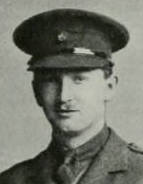
SECOND LIEUTENANT JOHN HASTINGS FOLLIOTT SCOTT
Oxford and Bucks Light Infantry, 3rd Bn. attd. 5th Bn. Died: 9th April 1917
Age: 22. Son of Rev. Richard C. Folliott Scott and Edith Marion Scott, of Hulcote Rectory, Bletchley, Beds.
Cemetery: TILLOY BRITISH CEMETERY, TILLOY-LES-MOFFLAINES, IV. D. 24.
Times obituary, 21st April 1917: “Second Lieutenant J H F Scot, Oxford and Bucks Light Infantry, killed April 9th was 22 years of age, and son of the Rev R C F Scott, of Hulcote Recory Befordshire, and Chaplain to the Bedfordshire Yeomanry. He was educated at the Knoll Woburn Sands, and Lancing College with his twin brother Second Lieutenant C W F Scott, Ghurkha Rifles, and his elder brother Lieutenant R T F Scott East Yorkshire Regiment, who was killed in action on March 18th 1915. On the outbreak of war Mr Scott was tea planting in Ceylon and returning home, was given his commission. He joined a battalion of his Regiment at the front where he had been serving since last September.”
Lancing College Roll adds Killed in Action at Arras.
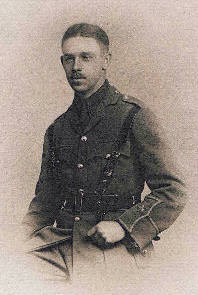
R J L SCOTT
I have yet to establish the identity of this man. Were the initials on the postcard wrong, should they have read R. T. F. Scott?
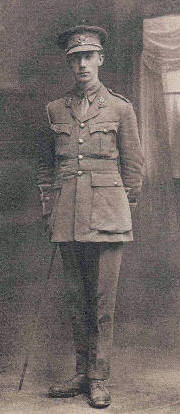
LIEUTENANT FREDERIC BARON TANQUERAY
Middlesex Regiment “B” Coy. 16th Bn. Died 1 July 1916
Age: 24. Son of Frederic Thomas and Catherine Tanqueray, of Woburn, Beds.
Cemetery: BEAUMONT-HAMEL BRITISH CEMETERY, B. 62. Commemorated on the Woburn Memorial.
Times obituary, 14th April 1917: “Second Lieutenant F. Baron Tanqueray, Middlesex Regiment reported missing last July now officially reported wounded and missing and believed to have died on that day, was the younger son of Mt Frederick T Tanqueray, solicitor of Woburn, Beds and was 24 years of age He was educated at The knoll Woburn Sands, and at Tonbridge School. Having passed the final Law examination on January 1914 when only 21, he joined his father in his business as solicitor at Woburn, but on the outbreak of War he enlisted in the Public School Battalion of the Middlesex Regiment and worked through the ranks to be Sergeant. He was offered and accepted a commission in the same Regiment in March 1915 and went to the Front the following November.”
MAJOR COLIN BALFOUR TRAILL, M.C.
East Yorkshire Regiment 10th Bn. Died 28th June 1918
Age: 23. Son of Gilbert Francis and Edith Elizabeth Traill, of “Broadlands,” Tunbridge Wells, Kent.
Cemetery: LE GRAND HASARD MILITARY CEMETERY, MORBECQUE Plot 1. Row A. Grave 4.
Times obituary, 20th August 1918: “Major Colin Balfour Traill, M.C. East Yorkshire Regiment, was the son of Mr and Mrs Gilbert F Trail of Broadlands, Tonbridge Wells. He was born in December 1894, and educated at The Knoll, Woburn Sands and Rugby. He obtained his commission in March 1915, having been more than once refused for short sight. He was wounded in November 1916, and again in May 1917 on which occasion he won the Military Cross. After some months in hospital, he rejoined his battalion last April, and was killed while leading gis company on June 28th. His colonel writes: Part of the way to the assembly position we rode up together (on the previous night) and I was impressed by his cool manner. He had taken every step to ensure the sucess of the operation, and although he did not live to see it, the fruits of his work became apparent in the behaviour of the company, their arriving at the correct objective etc.”
LIEUTENANT THOMAS PILLANS WARD
Northamptonshire Regiment 7th Bn. Died 31st July 1917
Age: 20. Son of the Rev. Thomas Ward, M.A., Rector of Alwalton, Northants.
Memorial: YPRES (MENIN GATE) MEMORIAL, Panel 43 and 45.
Unknown newspaper (PA?) report, 18th August 1917: “BRILLIANT SCOLAR SLAIN. Sec. Lieutenant Thos. Pillans Ward, Northants Regt., son of the Rev T Ward, Principle of St Peters College, Peterborough, and rector of Alwalton, is officially reported “missing and believed killed” on July 31st. Lieutenant Ward, who was only twenty years of age, was educated at Woburn Sands (the Rev F. F. Hort) and at Rugby (Mr Dickinson’s) where he won a scholarship and later a scholarship at Kings College Cambridge, in Classics and history. He also had two general leaving exhibitions from Rugby, where he had taken the Queen Victoria Memorial Prize for History. He was Head of his house and a member of the cricket xxii. He joined the Northants Regt. as soon as he left Rugby. He was selected to be a musketry instructor and served as such in the 28th Training Reserve Battalion. He made repeated applications to be sent to the Front and ws killed (presumably) in his first action on July 31st. A soldier of the Battalion wrote: He went over the top without flinching, and led his men very brave, like the officer he was. He was a gallant and good officer, so good to his men. Widespread sympathy has been extended to Mr and Mrs Ward in the great loss they have sustained. The following letter has been received by the Rev T Ward from the Colonel of the former 8th Northamptonshire Regt. : “During the time your boy was with us in the Northants, and later in the 28th Training Reserve Battalion, he was a fine young officer, and I think I can say without exception, all ranks were fond of him, and glorious as his end was, regret his loss. For months he had been keen to go out, and for a long time I would not further his desire, as I thought him too young and not hard enough to stand the strain.”
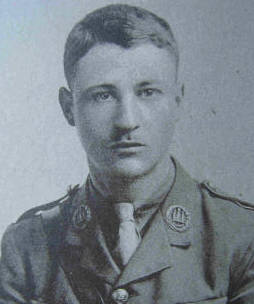
SECOND LIEUTENANT ARTHUR SIMON WATSON TAYLOR
London Regiment 22nd Bn. Died:14th September 1917
Age: 33. Son of Arthur Wellesley Watson Taylor and Mary Emmeline, his wife (nee Murthwaite), of Haughton Grove, Ramble, Jamaica, British West Indies.
Cemetery: MENIN ROAD SOUTH MILITARY CEMETERY, II. C. 7.
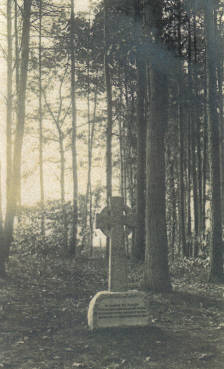
Page last updated Jan. 2019.
